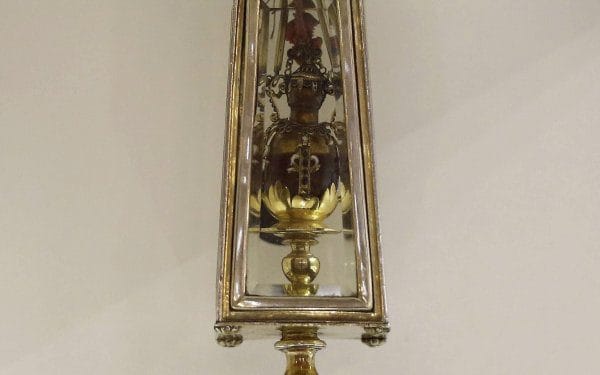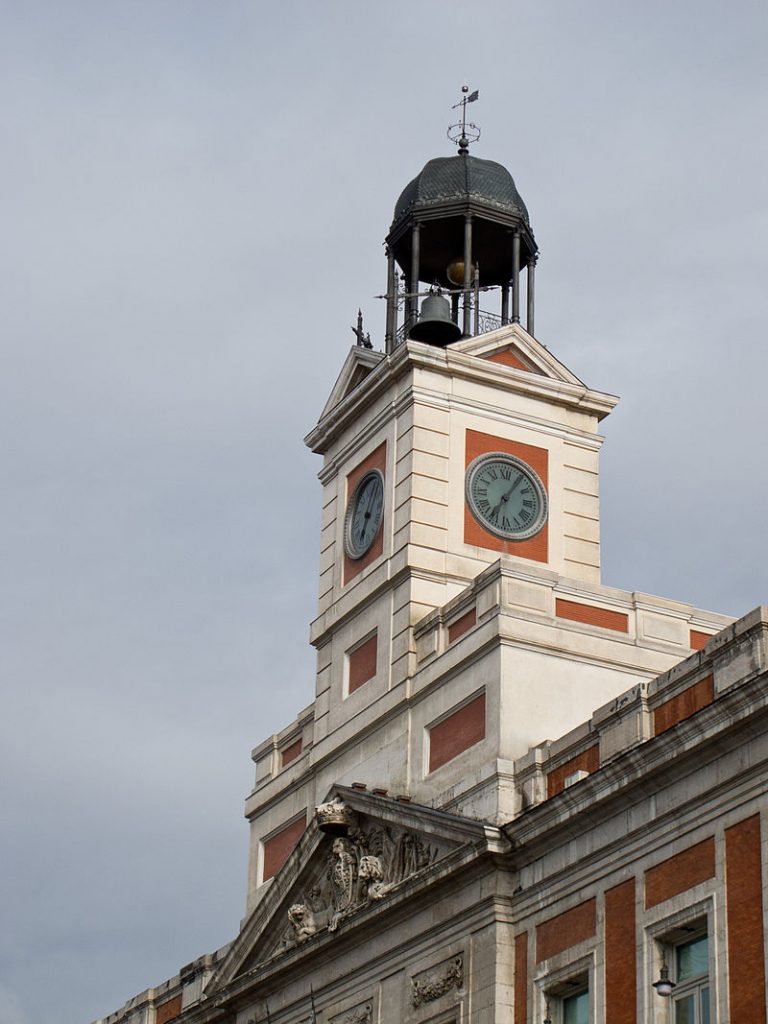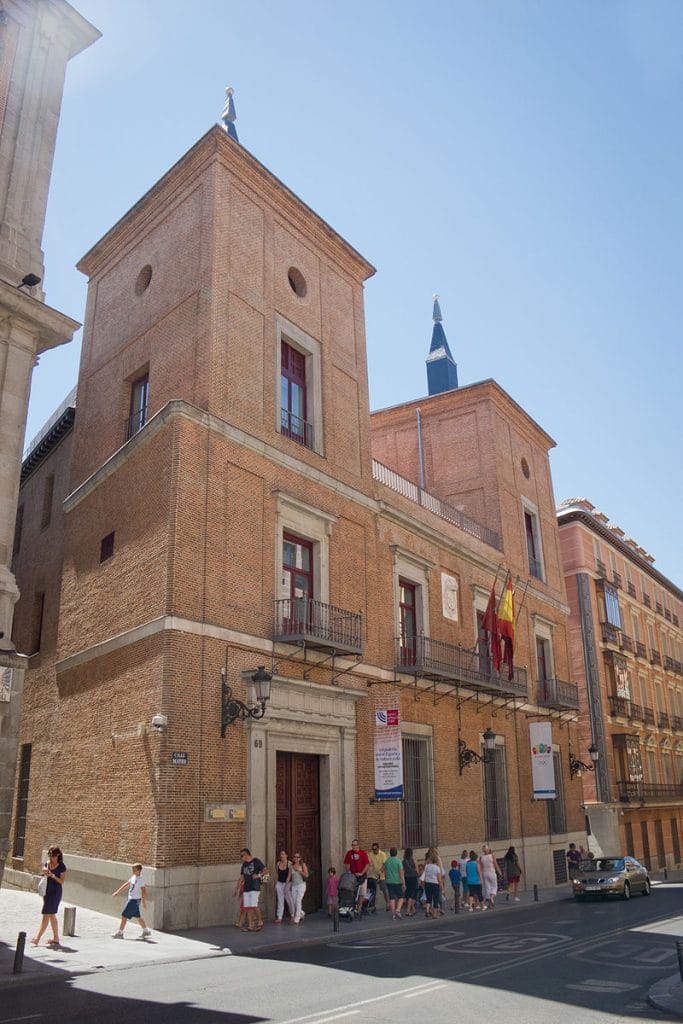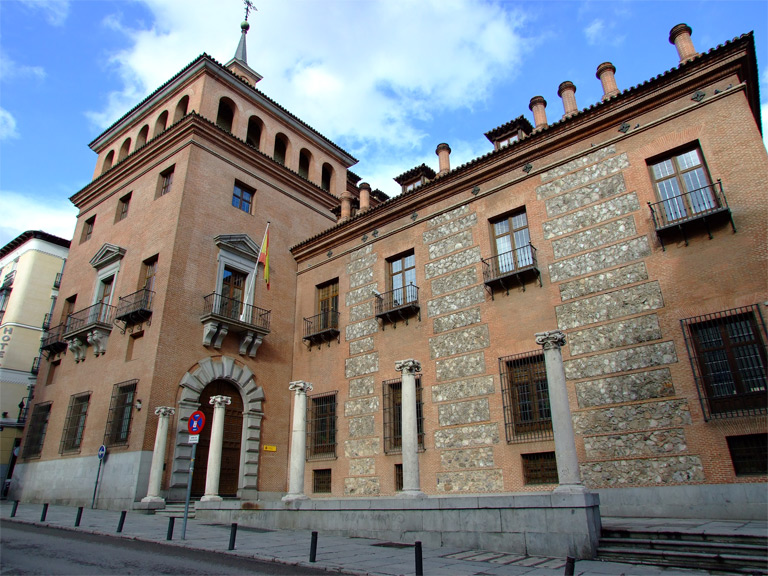Fervent belief
“There are people who say it’s a fake, but I can tell you, I’ve seen it myself! It’s really incredible, the blood turns to liquid and goes a bright shade of red!”
During this impassioned speech, our guide’s eyes shine with the fervour of the true believer. Some in the group mirror her enthusiasm, while others stand with their arms folded looking more than a little doubtful. We are in a huge room inside the Royal Monastery of La Encarnación. The walls are lined with glass cabinets containing hundreds upon hundreds of gold and silver reliquaries. The bone fragments of defunct saints are prettily packaged, so that even the skulls – displayed in glass boxes atop beds of colourful artificial flowers – look oddly attractive. The main draw amongst all this Catholic bling is a small glass ampule filled with a dark crusty substance. This is the magical coagulated blood of early Christian martyr Saint Pantaleon which, every year on 27 July, liquefies in front of crowds of the faithful.

As you can perhaps tell from my tone, I’m more than a little skeptical about this miracle, but I can’t resist an urban legend, which is why I lined up in the heat a week before 27 July for the official tour. And I’m not sorry I did. The convent is a fascinating building in its own right, one of Madrid’s oldest, built between 1611 and 1616, and still home to a closed order of nuns who live right in the heart of central Madrid. To this day they have little contact with the outside world and guests are only allowed in on well-supervised tours. Needless to say, photos are strictly forbidden.
The origins of the ampule
The nuns got their mitts on the ampule after it was given to the Spanish king in 1611 by Pope Paul V. Supposedly, it’s the genuine blood of Saint Panteleon, a doctor who served the Roman emperor himself before being converted to Christianity. As as a result, he not only lost his job, but his head in 305 AD. Some prescient early Christians were conveniently around at that point to scoop up samples of his blood for future veneration. How this blood survived through the ages to wind up in Rome is, like many details of the saint’s life, incredibly fuzzy.
After visiting the convent and hearing the testimony of the guide, I read up on theories about how this miracle is achieved and was surprised to note that most skeptics bend over backwards to find an explanation that doesn’t point an accusing finger at the nuns themselves – despite the rise of secularism, nuns in Spain are still considered to be beyond reproach. This leaves us with a “scientific explanation” that is downright bizarre. Namely that the blood has been mixed with whale sperm which, when heated or agitated, turns to liquid. Bearing in mind that the convent was built with thick stone walls that pretty effectively insulate the place from the burning July heat and that the blood liquefies each year exactly on the date of the saint’s birthday, I for one am not buying it.
Genuinely miraculous?
The relic at La Encarnación is not the only sample of Saint Pantaleon’s blood, another is located in Ravello in Naples, Italy. This is also said to liquefy on the saint’s feast day further bolstering the claims that this is a genuine miracle. Other “proof” of its authenticity is that the Inquisition thoroughly looked into the matter in the 18th century and declared the miracle to be genuine. Hmm, so the church investigated itself and didn’t find any evidence of tampering, how very convenient!
My personal opinion is that until the Catholic Church actually allows proper scientists access to test the contents of the ampule and observe the bloody (pun intended) thing up close before and during the miracle, it’s perfectly reasonable to cry fake! Still, this won’t deter the thousands of visitors who are due to rock up to the convent to see the ampule on display this coming Friday.
If you’re interested in taking a look at the convent, guided tours take place twice a day at 10am and 4pm. The tour is in Spanish, but if you’re up to it, it’s really informative and entertaining. Entry is 6 euro, but for members of the EU and citizens of Latin American countries, it’s free of charge on Wednesdays and Thursdays.
Keen to find out more about the history of Madrid? See another side of the city with one of my unique walking tours.






Pingback: Five Things You Didn't Know About Madrid - The Making of Madrid